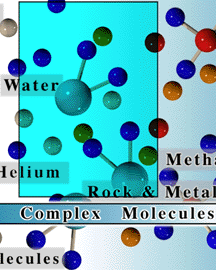This is a drawing which depicts what Saturn's atmosphere is made of.
Click on image for full size
An Overview of Saturn's Atmospheric Composition
Saturn's atmosphere is mostly made of the simple molecules hydrogen and helium. There is a large amount of sulfur, which combines with some of the hydrogen to form hydrogen sulfide. There is also a large amount of nitrogen, which combines with the hydrogen to form ammonia. Oxygen is also present, which combines with the hydrogen to form water.
These molecules, ammonia, ammonia hydrosulfide, and water, form clouds at different levels in the atmosphere of Saturn. They also form hazes of smog high up in the atmosphere.
You might also be interested in:
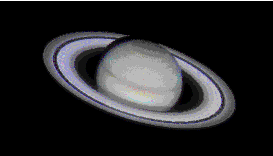
Saturn's atmospheric environment is one of strong gravity, high pressure, strong winds, from 225 miles per hour to 1000 miles per hour, and cold temperatures of -270 degrees to +80 degrees. With winds
...more
The dramatic appearance of Saturn stems mainly from the spectacular rings. What is visible of the atmosphere is much less dramatic. The clouds of Saturn are much less colorful than those of Jupiter. This
...more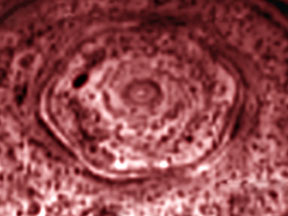
Astronomers have discovered a bizarre, hexagon-shaped feature in the clouds of Saturn near the planet's North Pole. The feature was first seen in images returned by the Voyager spacecraft in the 1980s,
...more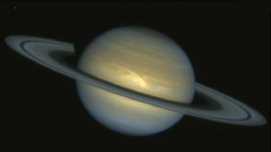
The most important motions in the atmosphere are winds. The major winds in Saturn's atmosphere are the zonal winds which are composed of alternating belts and zones flowing in opposite directions. Belts
...more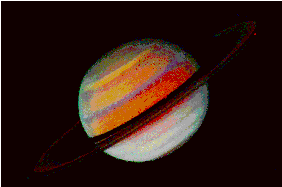
The striped cloud bands on Saturn, like Jupiter, are divided into belts and zones. In a belt, the wind flows very strongly in one direction only. In a zone, the wind flows very strongly in exactly the
...more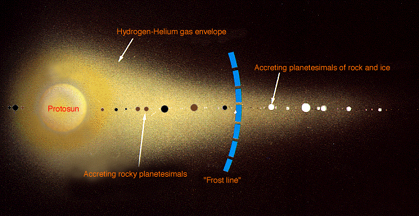
The position of the planets in the solar nebula greatly affected their 1. size and 2. composition. This is because of the effect of how cold it was in the nebula. 1. The nebula was a lot warmer close to
...more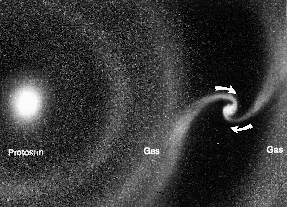
As shown in this picture, while they were forming in the solar nebula, the nucleii of the planets-to-be (called protoplanets) drew material to themselves from the cloud of gas and dust around them. The
...more


